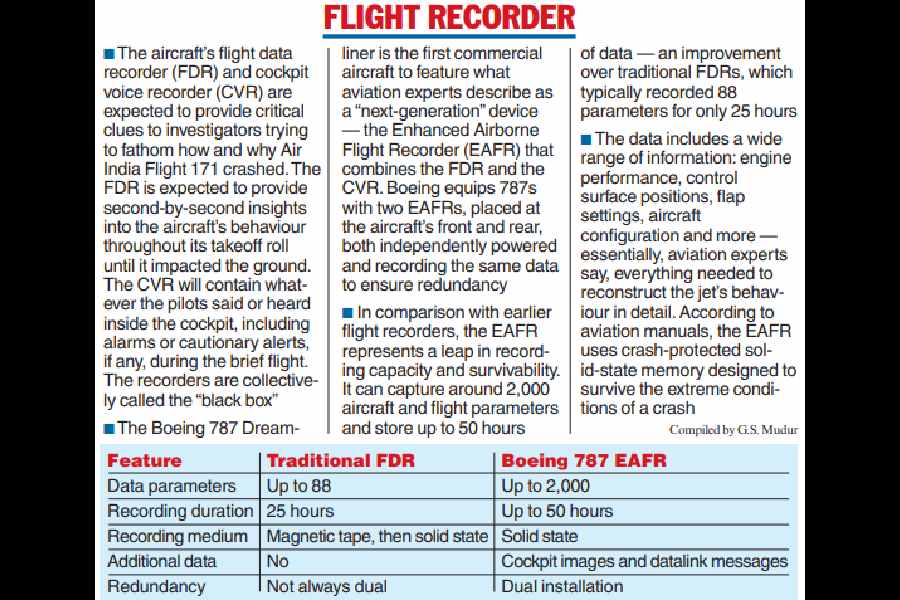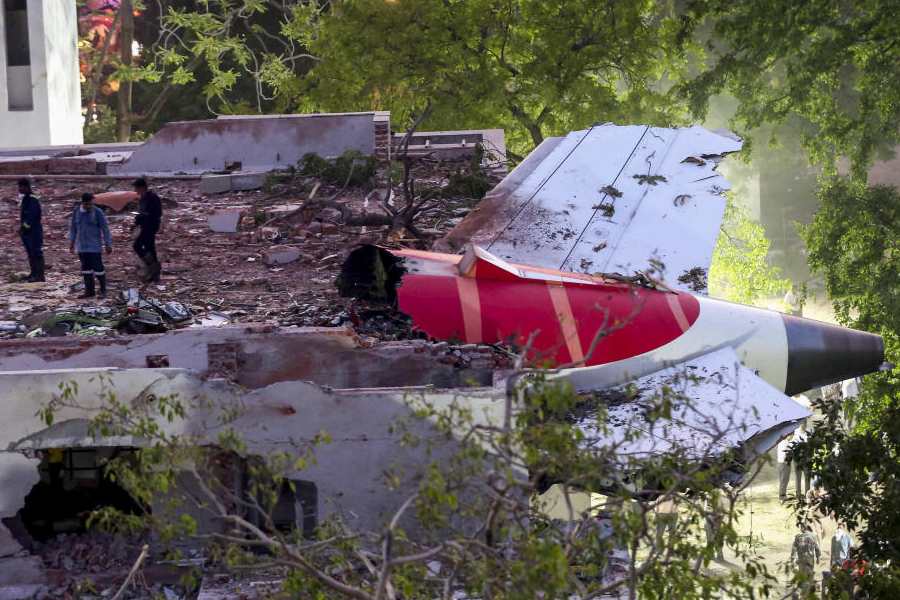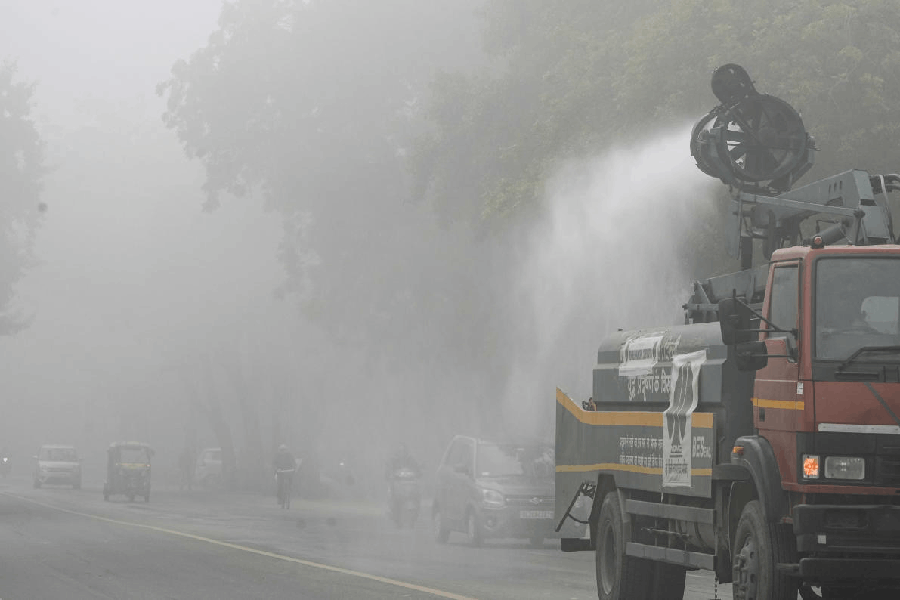Pilots are weighing multiple theories to make sense of why the London-bound Flight AI171 lost lift and crashed 32 seconds after takeoff from Ahmedabad — among them, a rare dual-engine failure and the unsettling possibility of a critical error in the cockpit.
Experts say the cause of the crash — the first involving a Boeing 787 Dreamliner since its commercial debut 14 years ago — will become clear once investigators examine the flight data recorder, the cockpit voice recorder, and other evidence from the crash site. (See Chart)
But veteran pilots who have seen airport footage of the aircraft from takeoff to impact say its behaviour suggests it lost lift — the upward force that allows a plane to rise off the ground and stay in the air.
A plane that takes off from the runway but suddenly loses lift, experts say, may have faced either of two situations.
One, a loss of thrust in both engines: from bird strikes, fuel contamination or another malfunction.
Or two, an error in the settings of the flaps, the hinged panels on an aircraft’s wings that are lowered during takeoff and landing to increase the lift and allow the plane to fly safely at slower speeds.
The pilots have asserted that their views are speculative and that only the official investigation can determine what really happened.
Some pilots say the footage from the aircraft’s final moments show no flames, smoke or sparks from either engine — and no birds — suggesting the engines may have been intact and running.

But Captain Mohan Ranganathan, an aviation safety expert and former instructor pilot, said engine failures need not always be accompanied by smoke or fire.
“A compressor stall could lead to the loss of thrust without fire or smoke,” Ranganathan told The Telegraph: “A bird strike need not cause engine fire or smoke.”
The lone survivor from the crash has reported hearing a loud bang after takeoff. Ranganathan and other aviation experts say this too could help the investigators determine whether engine failure led to the crash.
Pilots are also debating the chances that both engines would have failed simultaneously. The aircraft is designed to fly on a single engine and it would require dual-engine failure to cause it to lose lift. But, they say, the plane’s configuration and behaviour, as visible in the video, do not point to a single-engine failure.
One possibility is that fuel contamination or blockage caused both engines to lose thrust. But Steve Scheibner, a US airlines pilot, says that had such a problem occurred, the engines would have likely sputtered during the aircraft’s takeoff roll, alerting the pilots.
“But they rolled down the runway, took off at normal speed, nose upward,” Scheibner said in a 17-minute commentary on the crash posted on his YouTube channel, named Captain Steeeve.
“The idea that both the engines failed is a billion or a trillion-to-one chance.”
The aircraft’s configuration — landing gear still out, and the orientation of its flaps — during its 32-second flight has prompted Scheibner and others to speculate about the possibility of a flap-setting error after takeoff.
The landing gear — typically 10 tyres on a Boeing 787 — provides drag or resistance, and standard protocols require pilots to retract it once the aircraft begins to climb. In the video, the gear is visible throughout its brief flight.
“The landing gear has no business to be down,” said Captain C.S. Randhawa, president of the Federation of Indian Pilots, who has flown a Boeing 777 and worked with India’s aviation regulator.
Randhawa, Scheibner and a former US combat fighter pilot, Ryan Bodenheimer, lean towards a scenario in which the pilot flying the plane alerts the second pilot about successful takeoff, requiring the second pilot to manually retract the landing gear.
But instead of retracting the gear, the second pilot accidentally alters the flap settings, causing loss of lift.
“Putting the flaps up… whether there is (engine) thrust or not… at a low altitude like this is a death sentence,” Bodenheimer said in an 18-minute commentary on his YouTube channel, Max Afterburner.
“It’s going to make it look like there is a loss of thrust…. At a low speed, the jet is going to sink.”
At less than 600 feet from the ground, the aircraft would not have had space to recover. The flaps retracted, the aircraft at its heaviest, and the landing gear still producing drag, Scheibner said, would be “a bad combination”.
“This may have been a tragic mistake…. I hope it wasn’t, maybe there’s some other explanation. But hoping will not bring people back,” Scheibner said. “This is a bitter time in aviation.”










